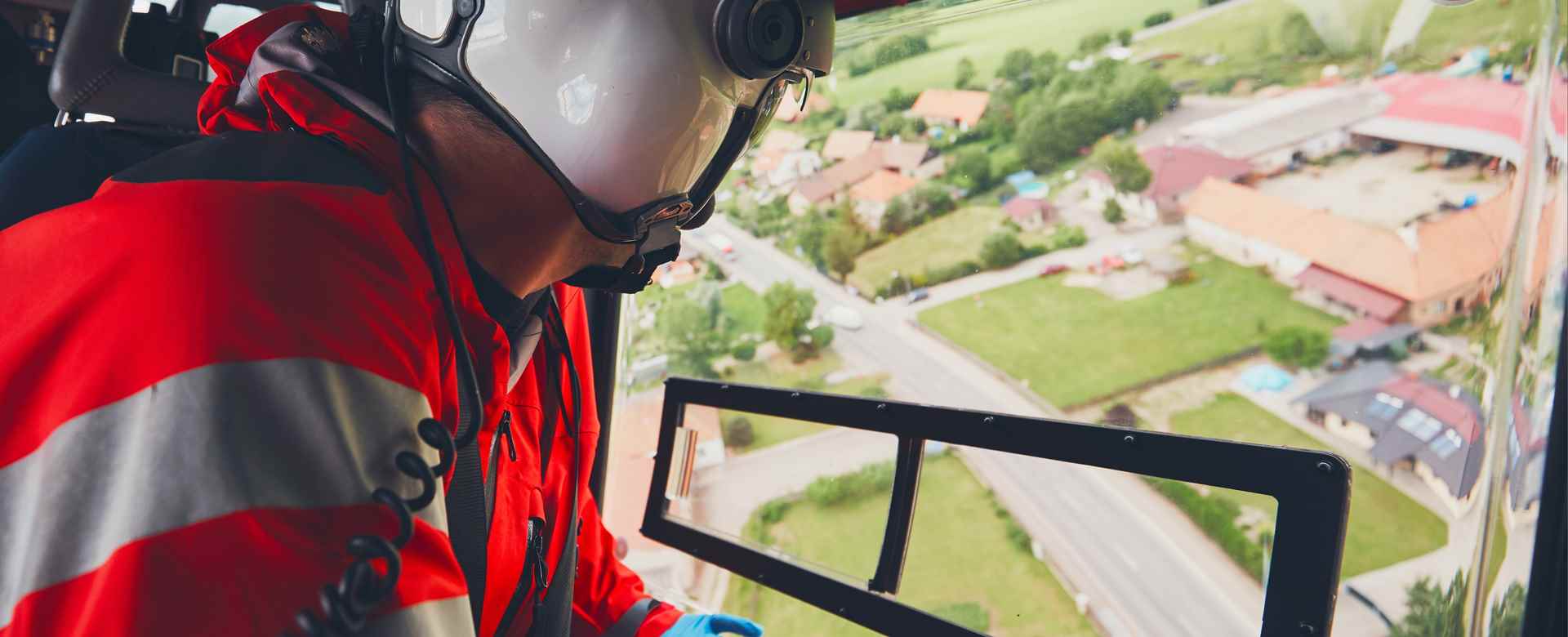Air ambulances have rapidly become vital and unique fixtures of the U.S. healthcare system. As specialized aircrafts – i.e., medically equipped helicopters and fixed-wing airplanes – they provide emergency transportation over distances and/or terrains that would be impractical for ground ambulances.
Their use has surged since 1980, when medical helicopters began to be manufactured at scale, but air ambulances have been around in some form for more than a century. The first air medical services (AMS) were tested during World War I and gradually became fixtures of all major military operations thereafter. Civilian equivalents emerged later in the 20th century within hospital systems.
Today, AMS are still delivered by hospitals themselves, as well as by municipal government agencies (e.g., the Cleveland MetroHealth System, which is county-owned and operated), private EMS providers and charter firms. Individual air ambulances may be dedicated or multipurpose, and, like traditional ambulances, they are outfitted with a variety of specialized medical equipment and medications.
According to the Association of Air Medical Services, there are at least 400,000 transports via helicopter every year, and another 150,000 via fixed-wing aircraft. Many of these flights serve patients who are in rural areas and/or have life-threatening conditions that require immediate transport to a trauma or burn center.
Air ambulance use case: Rural transportation
Rural residents, especially in the western states, often lack access to local EMS. Even if EMS is available, it might not be sufficient during life-threatening emergencies, due to the remoteness of their locations.
Consider the case of automobile accidents in the rural U.S. The National Highway Traffic Safety Administration estimated that in 2013, fatal crashes in rural areas accounted for 53 percent of all such incidents nationwide, even though less than half the country’s population is rural. The inherent challenges of ground ambulance service in such environments have contributed to this discrepancy.
AMS provide the speed and precision necessary for quickly moving patients from ranches, forests and mountains to a hospital. States such as Montana have made AMS front-and-center in their healthcare systems to respond to automobile accidents, head traumas and cardiac arrests, among other conditions.
Air ambulance use case: Surgeries
Air ambulances are also an efficient way to bring paramedics directly to the site of a trauma requiring immediate action. For example, a medic might take a helicopter to treat someone who suffered a knife attack or accidental injury. Air ambulance usage in the U.K. has surged in response to violent crime, enabling doctors and paramedics to rapidly treat severe bleeding and heart attacks.
For both surgeries and rural response, air ambulances offer unique benefits in terms of their speed and their ability to avoid impediments such as road traffic; however, they carry their own set of complications in the form of relatively high costs.
Cost considerations for insurers, hospitals and patients
AMS are not cheap. A Research 360 analysis of one air ambulance provider found that its average bill to patients was nearly $41,000 in 2014. States are generally unable to cap such amounts due to a key federal law on airline deregulation, although some AMS organizations do set limits on their invoices.
Insurance and air ambulances
Insurance coverage of air ambulance transports has been decreasing, as insurers have examined these high reimbursements more closely to determine the necessity of air ambulance use. An analysis by the Montana Commissioner of Securities and Insurance found that private insurers in the state typically paid between $7,000 and $12,000 for an out-of-network air ambulance making the 130-mile flight from Dillon to Missoula, exclusive of any deductibles, copays or coinsurance. The liftoff charge is typically the bulk of any AMS bill and can approach $30,000, while mileage charges are lower, but still in the neighborhood of several hundred dollars.
This still leaves many patients with payment responsibilities in the five-figure range. In-network charges are typically much lower. However, requesting an in-network provider might not always be feasible in an emergency, given the circumstances of different locations and geographic service areas of each AMS operator’s base. Medicare and Medicaid also reimburse relatively smaller amounts of AMS bills compared to private insurers.
In light of widespread cost concerns, the state legislature in Montana has sought to tax any air ambulance charges above allowable Medicare costs. A bill that passed the Montana House in April 2017 would require insurers and AMS operators to resolve any price disputes via mediation or court proceedings, so that patients were only responsible for copays/coinsurance, according to U.S. News and World Report.
It is not clear if the measure, even if signed into law, will succeed, though. Similar regulations on AMS expenses in Wyoming and North Dakota have been struck down in court for violating the aforementioned Airline Deregulation Act of 1978. Managing the cost burden of air ambulances is likely to remain a major issue for AMS providers, barring legislative change at the federal level.
The market for AMS helicopters
Another possible route for price relief may be the oversupply of AMS helicopters. There are more AMS helicopters than there is demand for AMS, triggering a decline in flight hours per helicopter between 2006 and 2013. The glut of air ambulances may eventually put downward pressure on what patients and insurers will pay for AMS, as well as what providers can charge.
Air ambulances provide critical services at high costs
As we can see, there are tradeoffs in modern AMS. The speed and reach of air ambulances save many lives each year by serving patients in remote locations and ensuring timely responses to traumas. At the same time, the costs of AMS require further attention from all healthcare stakeholders. We will look more at the benefits and challenges of air ambulances in the second part of this series.
Sign up for Updates:
Privacy Details
By submitting this form, you are consenting to receive marketing emails from: Advanced Medical Reviews, LLC. You can revoke your consent to receive emails at any time by using the Unsubscribe link, found at the bottom of every email.
